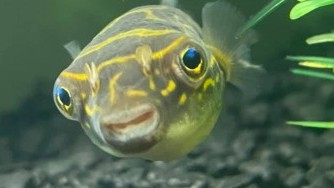Water Changes: Why Is It So Important?
- Apr 26, 2021
- Anshika Mishra
- 415 0 0

Water changes are the most important part of maintaining a healthy aquarium. You sure have read a lot about the most effective ways of doing water changes in your aquarium. But this article will help you in understanding why water changes are so important.
Water Changes
Love them or hate them, they are part of your hobby, it is part of your required maintenance. Loving the process can lead the majority of longer-term aquarists to eventually enjoy doing this. It is part of the satisfaction of knowing that you are caring for your fish, you are keeping your home clean, you are keeping them happy and healthy, but why do you want to do the water changes in the first place?
While your fishes are living in a box of water, they still need to eat, which will lead to fish waste. This waste stays in the box of water until the fishkeepers remove it.
Now, you might be thinking, if we have to do it then why have we spend our money on the filter.
Why do we use filters?
Well, the fact is that our filters do a lot of things, they mechanically filter you water which means that they remove the physical piece of waste out of the water, along with other wastes like un-eaten food, and other dangly particles swimming in your tank. This is also the part of the filtration that gives you crystal clear-looking water. But the damage is already done before your filters remove these wastes.
New Tank Syndrome
The waste floating around in your water and your water is converting into ammonia, which is a toxic and deadly chemical. It is the number one killer of fish especially in the new tank, this is names new tank syndrome.
Beneficial Bacteria
The only way to remove that ammonia is by way of your beneficial bacteria. This beneficial bacteria growing inside your tank is going to cover the ammonia into a toxic form called nitrite, and then covert it again to a far less toxic form called Nitrate.
Without these beneficial bacteria in your system, the ammonia is going to stay right in your tank along with all your wet pets. But fortunately, our filters help to grow bacteria by way of the biological medium that we put inside them. This bi0meida is the place where most of your beneficial bacteria will live on and grow on
This beneficial bacteria takes time to grow which is why you are always told that you cannot add fish immediately right into a brand new tank. You have to give the nitrogen cycle a chance to complete before adding fish to your tank.
Nitrate is also toxic
Let's go back a few words, remember that the beneficial bacteria convert ammonia into nitrates. But nitrate still is residing in the tank. The only way to remove the nitrate is you doing a regular water change. Your filters will not remove the nitrates, adding another filter will also not remove nitrate, adding more bio-media will not remove nitrate.
Live Plants
The only way to success removes nitrate is by removing old water and replacing it with new water. The only other thing that can help with the nitrates is live plants. Live plants will reduce your nitrates but they do not replace a good old-fashioned water change. They may be able to reduce the frequency of how often you need to do the water changes, but still, water change is needed.
Even though nitrates are far less lethal then ammonia and nitrite, it is still toxic. And as your fish continue to eat and produce more waste, more ammonia will be created in the tank, which then leads to an increase in nitrates. As you nitrites increase more than 40ppm, it began to become harmful for your fish. It can stunt their growth, it can stop them from eating, it can cause stress which can lead to diseases which is why it is important to test your water periodically so that you can get a good feel for when your nitrates will reach about 40ppm.
Bioload
But do know that every tank is different, it all depends on your bioload. How many fish you have, how bigger your fish is, how much do your feed, how often do you feed? All this will affect how fast your nitrates rise in your tank. Reaching about 40ppm is an indication of when it's time to do a water change.
Also, the tolerance of nitrate in your tank will be directly dependent upon the hardiness of your fish, some dishes can tolerate a bit more, while some will start showing side effects as soon as the threshold is passed.
Along with removing nitrate during a water change, adding new water removes tons of minerals back in your tank that was used up in the old water. By adding new water you are essentially adding the minerals that will keep your fish happy and healthy.






About author